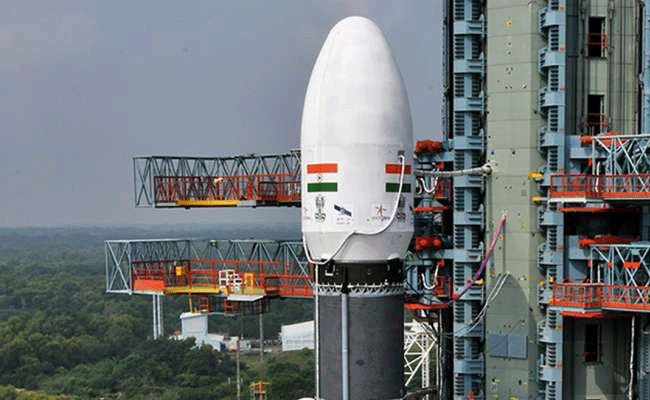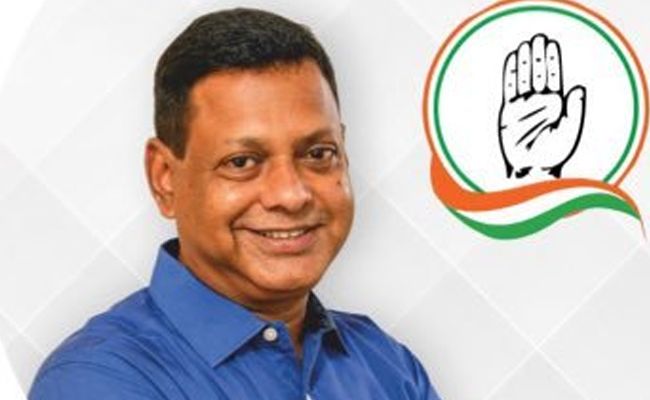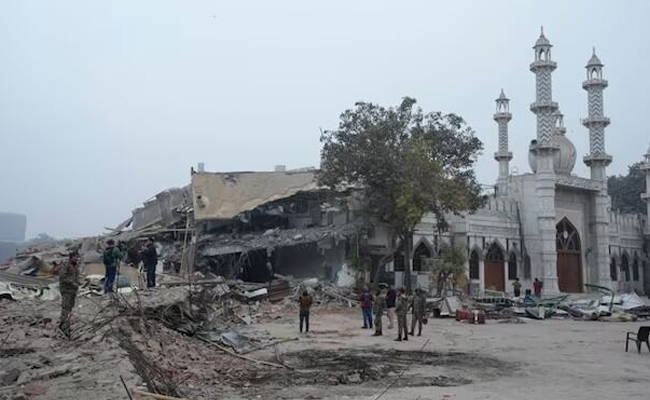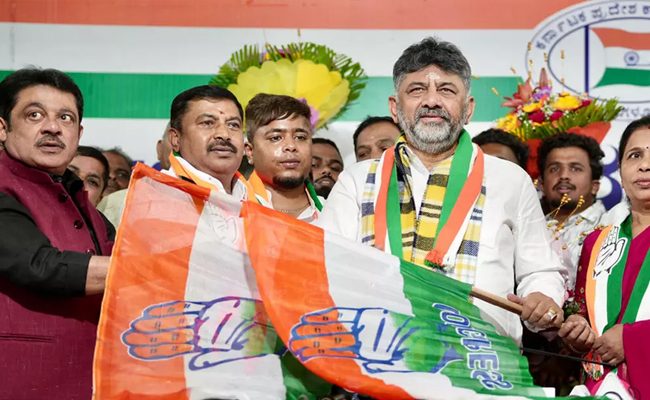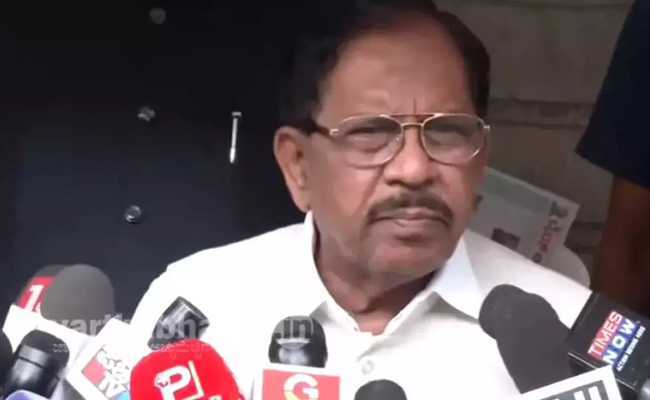Bengaluru (PTI): ISRO plans to undertake an inflight abort test of the crew escape system by this month-end using a test vehicle developed as part of the country's ambitious maiden human spaceflight venture Gaganyaan.
"Preparations are going on. All vehicle systems have reached Sriharikota (for the launch). Final assembly is progressing. We are getting ready for launch by the end of October," Director of Vikram Sarabhai Space Centre (VSSC) S Unnikrishnan Nair told PTI on Thursday.
"(With) this crew escape system, we will demonstrate (validate) in different conditions like high dynamic pressure and for transonic conditions," Nair added
Thiruvananthapuram-based VSSC is the lead centre of ISRO under the Department of Space.
An ISRO official said the crew escape system (CES) is the most important element in Gaganyaan.
According to ISRO officials, this month's launch of the test vehicle TV-D1 would be the first of the four abort missions of the Gaganyaan programme. It would be followed by the second test vehicle TV-D2 mission and first uncrewed mission of Gaganyaan (LVM3-G1).
The second series of test vehicle missions (TV-D3 & D4) and LVM3-G2 mission with robotic payload is planned next. The crewed mission is planned based on the outcome of the successful test vehicle and the missions in which no crew is on board, they said.
The test vehicle is a single-stage rocket, based on liquid propulsion, developed to validate the CES performance at different critical Mach numbers but Nair said it can be used for many purposes including space tourism.
"We are taking (the test vehicle) to transonic conditions. That means crossing the Mach number of one. We will go to something like Mach number of 1.2. That reaches around 12 km altitude. From there, the escape system will be activated, and that will go some 20 km, and from there the crew module will be released," he explained.
"This vehicle can be used for space tourism, if any industry is interested. Same vehicle can take a crew module to 100 km and then come back. That's possible. If anybody is interested, this vehicle can be used for that," Nair said.
The Crew Module is habitable with Earth-like environment in space for the crew. It is of double-walled construction consisting of a pressurised metallic inner structure and unpressurised external structure with thermal protection system.
It houses the crew interfaces, human centric products, life support system, avionics and deceleration systems. It is also designed for re-entry to ensure safety of the crew during descent till touchdown.
According to ISRO officials, the Gaganyaan project would demonstrate India's capability of taking a crew of two to three members to a circular orbit of about 400 km around the earth for a one-to-three days mission and bring them back safely to earth, by landing in a designated location in Indian sea waters.
The LVM3 rocket, the heavy lift launcher of ISRO, is identified as the launch vehicle for the Gaganyaan mission. It consists of solid stage, liquid stage and cryogenic stage. All systems in LVM3 are re-configured to meet human rating requirements and christened Human Rated LVM3 (HLVM3).
Nair said the LVM3 cannot be used for conducting tests to validate CES, saying it's an expensive rocket.
Let the Truth be known. If you read VB and like VB, please be a VB Supporter and Help us deliver the Truth to one and all.
Panaji (PTI): Congress' Lok Sabha MP from South Goa Viriato Fernandes has alleged that he received a notice from the Election Commission of India (ECI), in which he was asked to appear before it with documents to prove his identity in order to retain his name in the electoral rolls.
Fernandes, a former Navy officer, said that subjecting an MP to this kind of scrutiny confirms concerns raised by the Opposition that the ECI's Special Intensive Revision (SIR) was aimed at deleting the names of legitimate voters to prevent them from participating in the voting process.
The Chief Electoral Office (CEO) in Goa, however, later issued a clarification, saying the MP's enumeration form was placed under the "unmapped" category and a hearing notice was automatically generated and issued to him as mandatory details were not filled in.
In a social media post, Fernandes said, "Received notice from the ECI to appear with documents for proving my identity in order to retain his name in electoral roll. This notice is coming on the backdrop of ECI having subjected every contestant during last Lok Sabha polls in 2024, including me, with the highest level of scrutiny before clearing name for contesting the elections."
"Incidentally, I have been voting since 1989 after becoming eligible, thanks to late PM Shri Rajiv Gandhi Ji's initiative of giving voting rights for 18 year olds," he said.
He said he has travelled to Goa multiple times "from far off places of military posting" during his 26 years of service in the Indian Navy just to cast his vote, be it for Lok Sabha, assembly or zilla panchayat election.
"If a Member of Parliament can be subjected to this scrutiny, wonder the state of a common man, confirming concerns raised (by) Opposition parties and NGOs/Citizens about SIR being carried out by ECI to delete names of legitimate voters and prevent (them) from participating in the democratic process of voting," he added.
In the clarification issued later, the Goa CEO said, "During the course of the SIR, the Booth Level Officer (BLO) of Part No. 19 collected the enumeration form pertaining to the Hon'ble Member of Parliament, Captain Viriato Hipolito Mendonca Fernandes."
It was observed that the enumeration form did not contain mandatory details of the last SIR, including the assembly constituency number, part number and serial number in the electoral roll. As these essential particulars were not filled in, the BLO application could not automatically link the form with the existing electoral roll record, it said.
Accordingly, in the present case, the enumeration form was placed under the "unmapped" category by the system, and a hearing notice was generated and issued automatically as per the prescribed procedure, the CEO said, adding that the matter was under inquiry.
Received notice from ECI to appear with documents for proving my identity in order to retain my name in electoral roll. This notice is coming on the backdrop of ECI having subjected every contestant during last Lok Sabha polls in 2024 including me with the highest level of… pic.twitter.com/BMWrzw26yC
— Capt. Viriato Fernandes (@ViriatoFern) January 7, 2026

